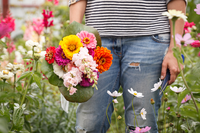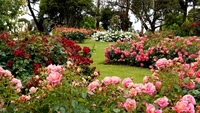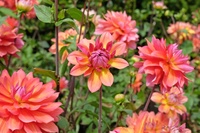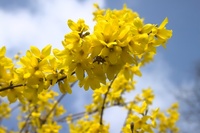Every year, you can join thousands of people taking part in the Big Garden Birdwatch. This event takes place from 29 to 31 January. Enjoy an hour with nature and discover the wildlife in your area. If you want to take part in this event, all you have to do is identifying what you see, and send in your findings.
Big Garden Birdwatch 2021
At the moment, it’s hard to get together with loved ones, because of the COVID virus. You can think of other ways to keep in touch with your friends and family. What about a combination between nature and your home? Check out the level of wildlife on your doorstep by taking part in the Big Garden Birdwatch. Ask your friends and family to participate in the world’s largest wildlife survey and contribute to better results. How to do this? You just have to choose a comfortable seat behind a window of your own home. Sounds super simple, right!
How does the Big Garden Birdwatch work?
If you want to take part in the world’s largest survey, all you have to do is following these steps:
- Pick a time. During 29 – 31 January, you choose one hour of birdwatching. Whether you’re an early bird or a night owl, you can still take part.
- Tell us what you see. During one hour, you note all of the birds that visit your garden. Birds that fly over your garden don’t count, and birds in the neighbour’s tree, also don’t count. To avoid double-counting, just record the highest number of each bird species you see at any one time – not a running total.
- Submit your results. From 29 January until 19 February, you can submit your results online via rspb.org.uk/birdwatch. If you want to send in your results by post, you can download a submission on this page.

Every count is important. So if you don’t count any garden birds during your one hour, please submit your result anyway. RSPB is very curious about the garden birds that do visit areas, but they’re also curious about which garden birds don’t visit areas.
Recognize garden birds in your garden
If you want to participate, you should know which birds to recognize in your garden.
- Blackbirds mostly feed on the ground and will eat anything, from fatty nibbles to mealworms.
- Blue tits and Great tits use a feeder. They love seeds as well as suet and peanuts. Fill your bird feeders with seed mix and suet balls.
- Finches, including Chaffinches and Greenfinches, use both feeders and bird tables to eat. Offer seeds and peanuts. Fun fact, if you want to treat them, feed them sunflower seeds.
If you want to recognize which birds enter your garden during the Big Garden Birdwatch, download a PDF which helps you write down the right bird species.
How does this help?
Thanks to people that take part in the yearly Big Garden Birdwatch, RSPB now has over 40 years of data. This helped increase the understanding of the challenges faced by wildlife. Over the past 40 years, the wildlife declined. Results from the Big Garden Birdwatching help RSPB spot problems. If we notice what bird species have declined and which are increased, we can design our gardens in a different way to attract more garden birds. However, in the past 10 years, RSPB starts to see some signs of recovery of the wildlife.
How to design a bird-friendly garden?
If you want to transform your garden into a bird paradise, you have to take some steps. Bird-friendly landscaping includes a few basic needs, including plants, bird food, shelter, water and nesting sites.
-
Plant native plants. Choose local and regional trees, shrubs, flowers and grasses.
-
Layered vegetation. Offer garden birds different layers of vegetation. Some birds like to forage on the ground for food, while others seek out for food sources on higher spots. Plant bushes, as well as tall trees.
-
Plant diversity. Different types of plants attract various bird species. Choose to landscape with specific plants that are favoured by certain birds and maintain the plants that are attractive to birds that already visiting your yard.
-
Messy is better. Garden birds like a messy garden. Leaf litter, longer grass and fallen leaves are very attractive to garden birds. This doesn’t mean your yard has to be a jungle, but leave some areas in their natural state to attract a wide range of birds.
-
Minimize pesticide use. Prefer natural land organic fertilizers over chemical ones. Bugs and other insects are a rich bird food source.
.jpg)
Feed garden birds
If you have any leftovers from fruit, dried fruit, unsalted nuts, don’t throw this away, but save them for garden birds. Place all the leftovers on a bird table or put it in a bird feeder and place in in the garden. Mostly right away, you will notice more garden birds to enter your garden. Be careful with anything that’s mouldy or salty though, too much salt is bad for garden birds and will affect their nervous system. Garden birds are practically unable to metabolise salt. Also, be aware that dried fruits such as raisins can be toxic to dogs, so be careful with dried fruit and dogs.
Do feed:
- Seeds and grains, (nyjer, millet, oats, sunflower seeds)
- Unsalted peanuts (don’t feed human peanuts)
- Cooked pasta or rice, boiled potatoes, raisins and sultanas
- Net-free fat or suet balls
- Apples, pears and soft fruits
- Insects such as mealworms or waxworms
Don’t feed:
- Bread
- Mouldy food
- Soft or liquid fat
- Milk
- Everything with plastic nets
- Salt
- Live maggots
Join the world’s largest survey and submit your results during the Big Garden Birdwatching.
Take part in the Big Garden Birdwatching
At our garden centre, we offer many bird feeders, bird tables, bird food and other bird accessories to attract more garden birds to your garden. If you want to count as many garden birds as possible, you should offer specific foods and design your garden bird-friendly. Leave old leaves and hang up birdhouses. If you want to decorate your garden bird-friendly, ask our staff at the garden centre. We would love to give you advice on how to decorate your garden. Visit our garden centre in Ripley. We look forward to welcoming you to our garden centre. See you soon at Ripley Nurseries.




